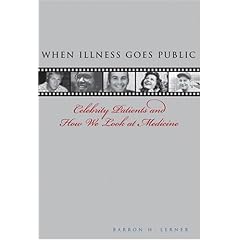Hero or Victim? The 25th Anniversary of Barney Clark's Artificial Heart
 Barney Clark was a retired dentist who, by late 1982, had developed end-stage heart failure and could barely walk to the bathroom. On the evening of December 1, 1982, Dr. William C. DeVries and his team at the University of Utah removed Clark’s heart and replaced it with an aluminum and polyurethane device connected to a 400-pound air compressor that would accompany Clark for the rest of his life.
Barney Clark was a retired dentist who, by late 1982, had developed end-stage heart failure and could barely walk to the bathroom. On the evening of December 1, 1982, Dr. William C. DeVries and his team at the University of Utah removed Clark’s heart and replaced it with an aluminum and polyurethane device connected to a 400-pound air compressor that would accompany Clark for the rest of his life. When Clark agreed to become the first recipient of a permanent artificial heart 25 years ago, he was exploring new territory not only in medicine but in bioethics. The Clark case was a proving ground for the new field which, in response to a series of crises, had emerged to forge a new paradigm for making medical decisions. Clark’s story reveals both the triumphs and limitations of the bioethics “revolution.”
The news that Clark was alert and responsive post-operatively made front-page news around the world. Although early interest focused on the case’s Frankenstein-like aspects, the public was quickly drawn to the story of an admirable patient, his stoic wife Una Loy and a team of pioneering doctors.
But all was not well. Almost immediately, Clark experienced severe complications, including seizures and a broken heart valve. It was later revealed that before his death, 112 days after the implantation, Clark had extended periods of confusion and even suicidality. He never left the hospital. But there were good days, too, such as March 7, 1983, when an interactive Clark celebrated his 39th anniversary with his wife and children.
The nascent profession of bioethics paid close attention to Clark from the start. Among the major reasons the field had emerged were a series of research scandals, in which patients had unknowingly been entered into harmful studies. Protecting the rights and bodies of research subjects—and patients—was central to bioethics’ mission.
Yet while the University of Utah had tried to heed these new concerns, most bioethicists ultimately criticized what happened. For example, Arthur I. Caplan, then of the Hastings Center, a New York ethics think tank, believed that animal experiments carried out to date had not been conclusive enough to warrant implantation of the heart in a human. Boston University’s George J. Annas termed the consent formed signed by Clark “incomplete, internally inconsistent, and confusing.”
The most critical ethical analysis was performed by the team of sociologist Renee C. Fox and historian Judith P. Swazey, who documented several irregularities in the process by which the Utah Institutional Review Board had approved the experiment. The Clark case, they concluded, was “fundamentally unethical” and “profoundly disquieting.”
But the public's response was quite different. Far from seeing Clark as a victim, he was lionized as a hero who had knowingly entered uncharted waters for the benefit of science and future patients.
“I lost a brother to heart disease and suffer from a serious heart problem myself,” one man wrote to Una Loy Clark. “Dr. Clark has given us all hope.”
“Who is so hard of heart as not to be profoundly moved by this historic accomplishment?” asked a Tennessee editorial writer.
“If, in the process of averting death,” wrote William Safire, then a columnist at the New York Times, “a patient chooses to become a human guinea pig or to marry a bulky machine, the patient has the right to demand that the medical profession let him make that choice.”
In the intervening 25 years, this dynamic has often been repeated: the public rejecting the advice of the very bioethics profession that has sought to protect it. Instances in which patients have pushed the envelope despite warnings include in vitro fertilization, stem cell research, enhancement technologies and entry into stage I clinical trials.
But this dynamic is, ultimately, a good one. Few bioethicists truly believe that they can or should singlehandedly circumscribe behaviors. We will always have patients like Barney Clark who, facing dreaded diseases, take risks that their protectors just don’t understand.